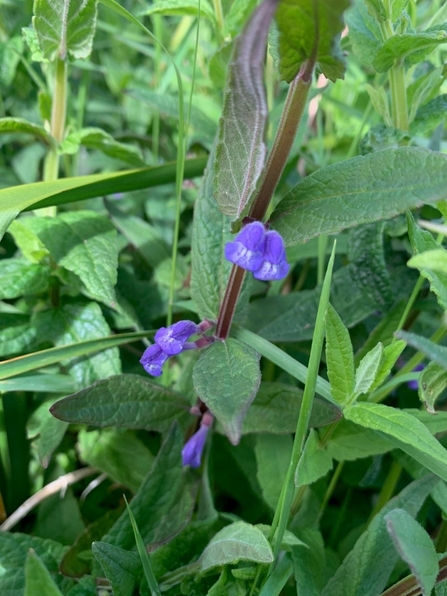MWT’s Agri-Environment Officer David Bellamy found the species whilst visiting a dairy farm on 4th July. Unable to identify the unusual plant, he photographed it, and it was later identified by MWT botanist Andree Dubbeldam as being Skullcap, a species not seen in the wild on Island since the nineteenth century.
Skullcap (scientific name Scutellaria galericulata) is a perennial member of the mint family and is a wetland-loving species. It has blue flowers which are 1-2cm long and it usually grows 20-45cm tall. It was found on an area of wet, marshy grassland, a common but threatened habitat which is best known to farmers by its Manx name ‘garee’.

